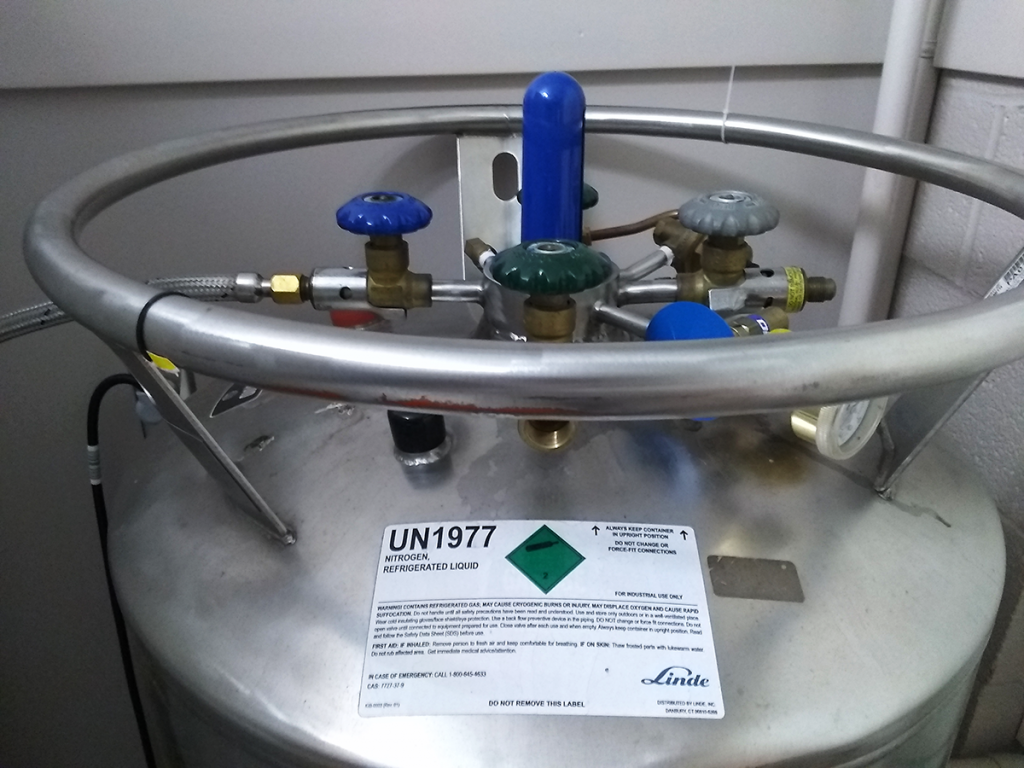
When you need to keep things cold, you have options, depending on your temperature needs and what’s available. Carnot cycle refrigeration is handy, effective, and reversible when you need to supply heat (think a heat pump or household refrigerator). You can use the thermoelectric effect via a Peltier device, in which electric current through dissimilar materials causes heat energy to flow in one direction. Or you can just huck a bunch of cold stuff at your target and wait for thermal equilibrium.
Cool running water is remarkably effective in this case. Even colder: ice, though a slurry of ice and water is often faster because of the increased convection and heat transfer through the cold liquid. Sometimes that sizable dollop of energy required for phase transition is really handy! Salt/ice/water slurry gets you colder still, and it’s a great way to make ice cream in the backyard.
Colder still: dry ice, or solid carbon dioxide. (We’re now at the point where you really don’t want this stuff to get on your bare skin.) It has some limited cooling potential, as it sublimates directly to gas at atmospheric pressure, and so good contact and heat transfer can be slow. You can get it to liquid form – the correct cold temperature range and high pressure – which is how we make dry ice when we need it. If you need a suitable liquid for extra-cold chilling, you’re probably looking at liquid nitrogen.
At -77°C, it’s very cold. Your chilling rate becomes limited by the Leidenfrost effect – that thing where a layer of insulating gas forms between the hot and cold materials, thermally and spatially separating them. Same thing happens when you dip a wet finger into a vat of molten lead, or the slippery skitter of a water droplet across the surface of griddle heated just right for pancakes. But, still, cold. Very cold. We use it as a backup for a freezer that’s supposed to hang out at -80°C as long as the power’s on. The stuff inside can handle slightly “warmer” temperatures for the time it takes to repair a power outage.
If you need even colder? Really dedicated folks dial it up to 11 and use liquid helium. That’s a whopping -269°C, which sounds intense. Or, if you prefer, about 4 K. It gets used here at the University, just not in Physics. (Astronomers might study it, but at the safe distances used for telescopic observation.)
All of these extra-cold normally-gases need special handling and care, not only for the temperature concerns, but also for what happens when they warm up and expand and displace all of the breathable air around. (Bad.) We all have some sense of the too-much-carbon-dioxide/monoxide symptoms – sluggishness, blue lips, etc. – but those of us not trained as fighter pilots aren’t as readily aware of the distinct symptoms of too much nitrogen, not enough oxygen. If you are one of the lucky few, you get to undergo normobaric hypoxia training, which can lead to roughly 18 seconds earlier awareness of hypoxia, which sounds like an awful lot in a plane that can travel a third of kilometer in that period at Mach 1.
As for the the dangerous effects of breathing a sudden roomful of now-gaseous helium? We assume your final words are hilariously high-pitched.